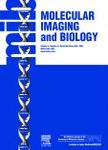版权所有:内蒙古大学图书馆 技术提供:维普资讯• 智图
内蒙古自治区呼和浩特市赛罕区大学西街235号 邮编: 010021

作者机构:Erasmus MC Dept Radiol & Nucl Med Univ Med Ctr Rotterdam Rotterdam Netherlands Erasmus MC Dept Mol Genet Univ Med Ctr Rotterdam Rotterdam Netherlands Erasmus MC Dept Urol Univ Med Ctr Rotterdam Rotterdam Netherlands Erasmus MC AMIE Core Facil Rotterdam Netherlands Univ Lausanne CHUV Dept Oncol Lausanne Switzerland
出 版 物:《MOLECULAR IMAGING AND BIOLOGY》 (分子成象和生物学)
年 卷 期:2020年第22卷第5期
页 面:1333-1341页
核心收录:
学科分类:0831[工学-生物医学工程(可授工学、理学、医学学位)] 100207[医学-影像医学与核医学] 1006[医学-中西医结合] 1002[医学-临床医学] 1001[医学-基础医学(可授医学、理学学位)] 08[工学] 1010[医学-医学技术(可授医学、理学学位)] 100106[医学-放射医学] 1009[医学-特种医学] 10[医学] 100602[医学-中西医结合临床]
基 金:Koningin Wilhelmina Foundation (KWF) [11089-2017/1]
主 题:Cell death Tumor necrosis SPECT Cyanine dyes Necrosis-avid contrast agents
摘 要:Purpose Current clinical measurements for tumor treatment efficiency rely often on changes in tumor volume measured as shrinkage by CT or MRI, which become apparent after multiple lines of treatment and pose a physical and psychological burden on the patient. Detection of therapy-induced cell death in the tumor can be a fast measure for treatment efficiency. However, there are no reliable clinical tools for detection of tumor necrosis. Previously, we studied the necrosis avidity of cyanine-based fluorescent dyes, which suffered long circulation times before tumor necrosis could be imaged due to low hydrophilicity. We now present the application of radiolabeled 800CW, a commercially available cyanine with high hydrophilicity, to image tumor necrosis in a mouse model. Procedures We conjugated 800CW to DOTA via a PEG linker, for labeling with single-photon emission-computed tomography isotope indium-111, yielding [In-111]In-DOTA-PEG(4)-800CW. We then investigated specific [In-111]In-DOTA-PEG(4)-800CW uptake by dead cells in vitro, using both fluorescence and radioactivity as detection modalities. Finally, we investigated [In-111]In-DOTA-PEG(4)-800CW uptake into necrotic tumor regions of a 4T1 breast tumor model in mice. Results We successfully prepared a precursor and developed a reliable procedure for labeling 800CW with indium-111. We detected specific [In-111]In-DOTA-PEG(4)-800CW uptake by dead cells, using both fluorescence and radioactivity. Albeit with a tumor uptake of only 0.37%ID/g at 6 h post injection, we were able to image tumor necrosis with a tumor to background ratio of 7:4. Fluorescence and radioactivity in cryosections from the dissected tumors were colocalized with tumor necrosis, confirmed by TUNEL staining. Conclusions [In-111]In-DOTA-PEG(4)-800CW can be used to image tumor necrosis in vitro and in vivo. Further research will elucidate the application of [In-111]In-DOTA-PEG(4)-800CW or other radiolabeled hydrophilic cyanines for the detection of nec